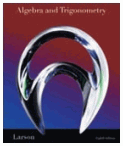- Q&A Categories
- BASIC MATH (93)
- PRE-ALGEBRA (441)
- ALGEBRA 1 (2,216)
- GEOMETRY (864)
- ALGEBRA 2 (2,745)
- TRIGONOMETRY (1,186)
- PRECALCULUS (1,903)
- CALCULUS (2,791)
- STATISTICS (129)
- PHYSICS (658)
- CHEMISTRY (136)
- MECHANICAL ENGINEERING (64)
- ELECTRICAL ENGINEERING (207)
- Winplot Tutorials (2)
Recent Visits







